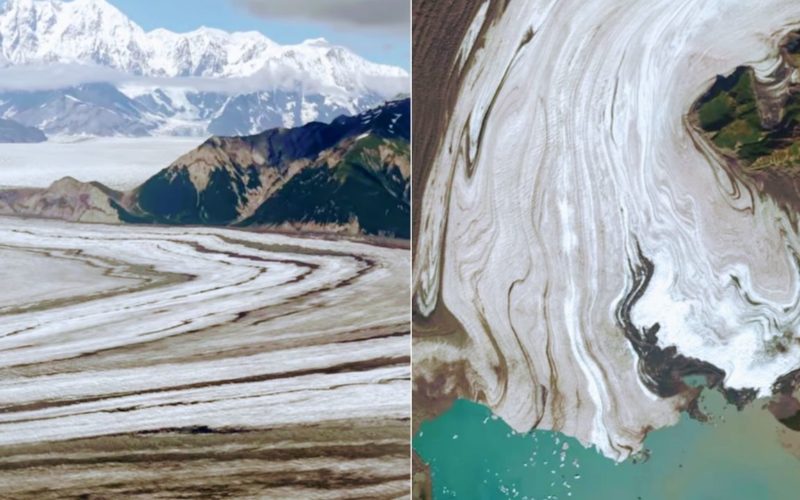We’ve heard about global warming, read studies that predict coastal cities will drown by 2050 and participated in climate strikes. But now we can see with our very own eyes, how glaciers are changing.
On December 9, at the annual meeting of the American Geophysical Union in San Francisco, NASA released time-lapse videos of Alaska’s glaciers taken from space. These six-second long videos were created by stitching together images from the Landsat mission satellites and depict changes in ice from 1972 to 2019.
NDTV reports that they are the work of glaciologist Mark Fahnestock of the University of Alaska Fairbanks. He was quoted saying,
“We now have this long, detailed record that allows us to look at what’s happened in Alaska. When you play these movies, you get a sense of how dynamic these systems are and how unsteady the ice flow is.”
After studying the changes spanning 48 years, he revealed that the Columbia Glacier started retreating from the mid-1980s and is currently 20 kilometers upstream. The Hubbard Glacier, in comparison, has advanced a total of 5 km and now has a large indentation because the ice has broken off.
People were amazed to see the brilliantly put together videos but were also saddened by the fact that the planet’s frozen regions are melting and retreating due to the warming climate.
They look like frozen rivers! Amazing data. Thanks for sharing.
— Curtis M Carpenter (@carpy075) December 11, 2019
https://twitter.com/henehene93/status/1204513939012366336
They are retreating! https://t.co/vCnaKrIZnD
— David Ogawa (@David_Ogawa) December 10, 2019
We already are aware of this but it is still absolutely mind-blowing…💥 https://t.co/1oI99OBrH0
— dzhuliana (@dzhuliana_kn) December 11, 2019
Amazing images.
Incredible advances over 50 years of study.
Profoundly essential in our age of depletion. https://t.co/Nv1jgwnsRI— linda MacCarthy studied Philosophy & Sociology UCD (@maccarthy_linda) December 10, 2019
If this doesn’t convince us climate change is real, we don’t know what will.




